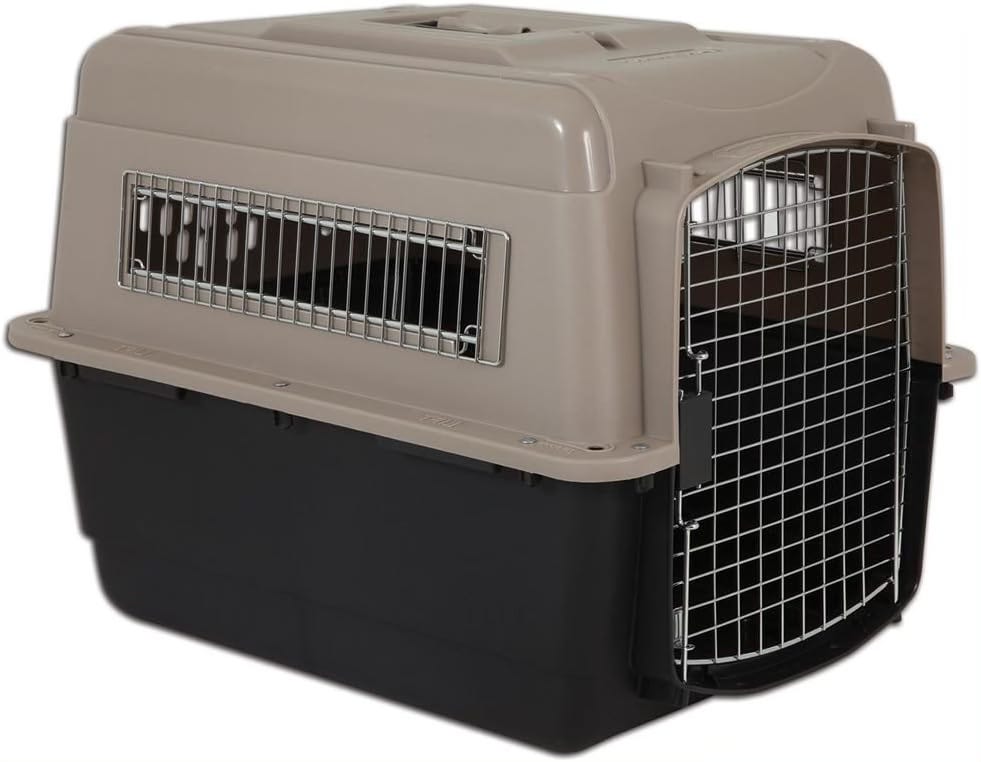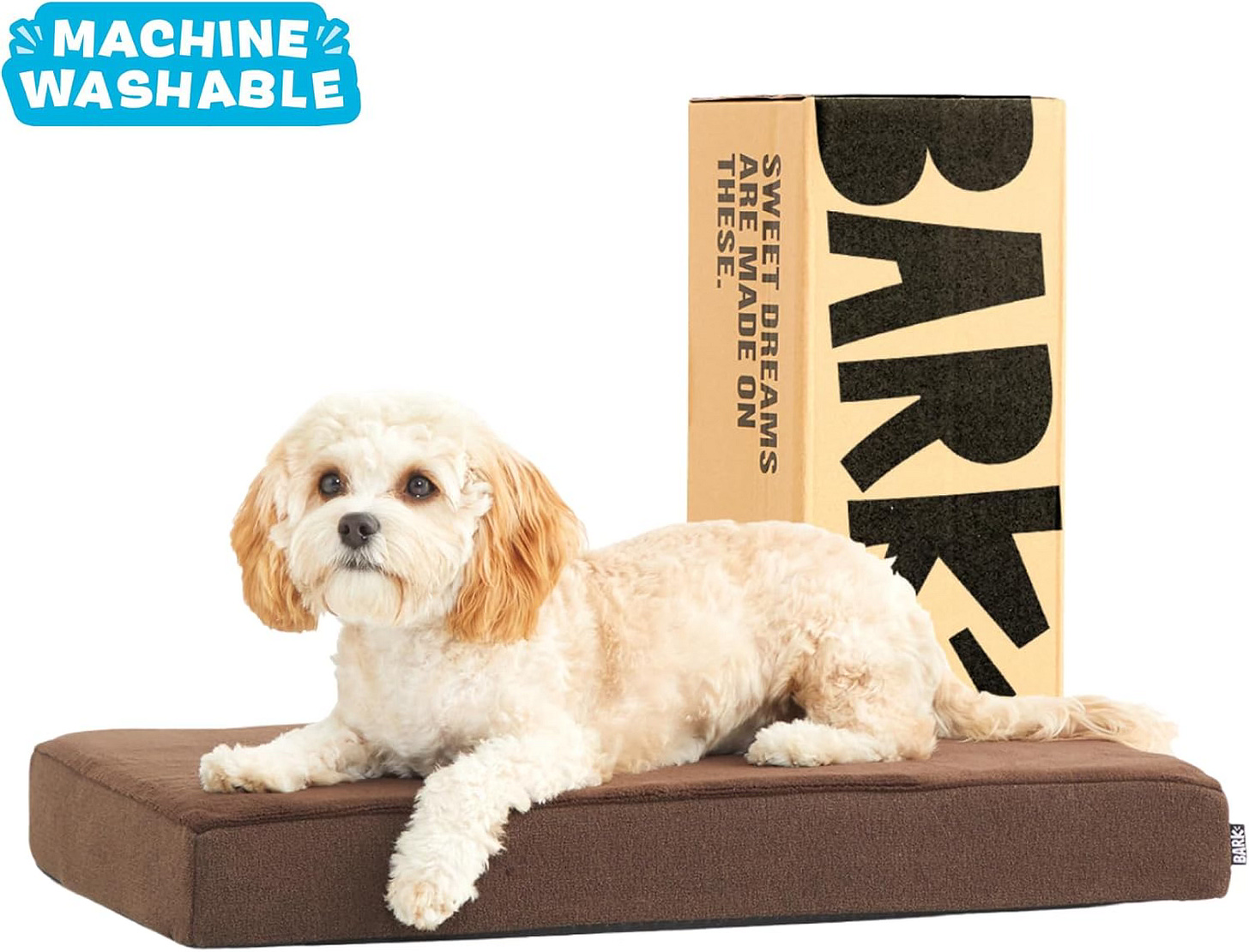Moving with Your Pet? All The Gear I Use to Internationally Travel With My Pup
It's all airline compliant, will keep your furry friend safe, and give you peace of mind.
If you’re like me, then a pet is more than just a pet. It’s part of the family.
And if you’re planning on moving, then where you go, your pet goes. Whether this is across the country or across the globe, traveling with your pet can be stressful. Not because of the dog (or cat), but because you can’t always be with them. Often, your furry little friend will need to ride in a kennel, placed in the luggage or cargo hold of an aircraft.
I’ve found the best way to achieve peace of mind (or at least to calm the nerves a bit) is to know the travel gear you have for your pet will keep them safe, while adhering to all international pet transit regulations.
As someone who has flown numerous times with my dogs (Miami to Peru, Peru to Argentina, Argentina to Italy, Italy to Albania), I’m well-versed in not only airline requirements, but also what gear is the best.
So, to help with your pet moving plans, I want to recommend all of the gear I specifically use. I’ll explain why it’s good and what you should look for (should you want to shop around).
Petmate Vari Kennel Ultra
This is for a larger dog. The exact size you need will depend on the size of your dog. Different airlines will throw around various measurements. I’ve never once had anyone break out a tape measure. Instead, your dog needs to be able to sit, stand, and turn around in the kennel easily.
(If you have a smaller dog, here’s an alternative kennel by the same brand.
So why this kennel? A few reasons. First, there are no wheels. Airlines won’t let you check a large kennel with wheels, so even if you had a kennel with them, you’d have to take them off. Second, the metal vents are on the side. These metal vents provide additional structural support over plastic cut-out windows (which actually weaken the kennel). At most, unless you have a small dog (we’re talking wiener dog small), only the rear “window” can be plastic.
There are large, all-metal kennels, which you might need to get if you have a very large dog, but when possible, I do like this option, because the dog can lie down and, more or less, hide. Because here’s the thing. When in an airport, for whatever reason, everyone in the world will want to pop their heads around the corner to see the dog. In my experience, strange faces suddenly appearing only stress dogs out further, and having plastic on 3 sides at least makes it possible for the dog to turn away.
(Because this particular kennel is only available in a large size, I’ve also provided a link to the smaller versions).
Pet Crate Carrier Cup
This food/water dish will snap onto the door of the kennel. Chances are, you won’t use it much, though if there’s a layover or you have to fly your dog via a cargo service, a staff member will add water to the dish from outside the kennel.
I will use this dish in a pinch if we have just arrived and I haven’t had a chance to buy water/food bowls, but it’s super easy to use with the kennel, and it doesn’t take up any floor space.
DryFur Pet Carrier Metal Fasteners
This is one of those sneaky little things about transporting your pet that you might miss, but it’s extremely important that you don’t.
The two plastic pieces of your kennel are secured in the middle. However, the plastic screws that come with the kennel are not technically approved for transit. Now, I’ve never had someone look closely at the screws (that I know of), but the last thing you want is for your dog to be booted because you don’t have the right screws.
These metal replacement screws are far more solid and won’t break. One 12-pack will be enough, though I have two packs on hand, just in case.
DryFur Live Animal Labels
These stickers have up arrows and “Live Animal” printed on them. I have one on every side of the kennel. I would recommend applying some packing tape over them. Sometimes, when going from humid to very dry locations, the stickers can start to peel, so extra layers of packing tape prevent that.
Barkbox Orthopedic Dog Bed
Who wants to sleep on hard plastic for half the day? It’s not comfortable, and for older dogs, it’s terrible on the joints. This particular dog bed is memory foam (I prefer that to the eggshell options as I think it gives a bit more rigidity when the dog needs to stand up and shift).
You would want to buy the kennel first, then opt for a dog bed that fits the kennel. However, one thing to keep in mind is how much height space your dog needs. If the top of your dog’s head is already very close to the roof of the kennel, you’ll want to get a dog bed that is about an inch thick. But if you have plenty of clearance then this three-inch thick option is the way to go.
This dog bed is also washable, so you can remove the cover and toss it in a washing machine. Also, for your flight, you will need to put down a puppy pee-pad on top of this. My experience is that the pee-pad is pushed aside almost immediately by the dog, but it’s something most airlines require.
If you decide to get something else, opt for a dog bed that has some kind of rubber grip on the underside. Otherwise, much like the pee-pad, it will be pushed aside.
Tile Pro/AirTag
As a Samsung user, I have a Tile Pro, but if you have an iPhone, then I’d suggest an Air Tag. Whichever you go with, these devices can give you peace of mind when tracking down your pup. You’ve probably heard of these devices being placed in luggage to make it easier to find them. However, you can use these with your pet that rides with luggage/cargo as well.
Here’s the thing, though. You can’t really place the tag within the kennel. The kennel will be independently scanned, and some airport security staff might not like it (just guessing, as I haven’t attempted to tape an outside device to the kennel).
Instead, you can secure the tag to the dog’s collar. The collar/leash is not scanned through the X-ray system. Your dog will not wear the collar while in transit. Instead, the collar/leash will be secured to the side of the kennel via a zip tie (if you don't have a bag of these somewhere in your house already,, you can buy them at Walmart, Target, or anywhere else in the hardware section. You can also buy them off Amazon. Any brand will do).
I can say with complete confidence that your pet will not end up at the wrong airport. Pet kennels are checked, scanned, double-checked, and triple-checked. Kennels are the last objects to be misplaced. Instead, the Tile Pro/AirTags are helpful in figuring out where your pet is inside the airport.
Some pets come out with the luggage on the conveyor belt, while in other airports, it’s an entirely different location (when flying to Rome, I was told my dog would come out with luggage…which was 100% false, so it took a bit of searching to track her down).
Link to AirTag (because the AirTag does not have a keychain loop like the Tile, you’ll need to purchase a case for AirTag that does).
Luggage Locks
This is something you need to have on hand, but you may not need to use it. It’s airline-specific, and often it doesn’t say on the website.
When you arrive at the airport with your pet, they will either take you behind the check-in desk into a rear room where they x-ray the kennel separately (you’ll hold onto your pet), or you’ll be sent to an oversized luggage desk where the same thing is done. Once the kennel passes through the x-ray and you put your furry friend inside, you’ll be instructed to secure the kennel door.
Typically, this means feeding a zip tie through each corner of the door (the kennel has a small hole pinched near each corner of the door specifically for this) to lock it in place. This is to prevent the kennel door from opening. However, some airlines will ask you to use a luggage lock for this. So, you’ll want four of these locks on hand, as well as a baggie of zip ties.
The good thing is, even if you don’t end up needing these for the kennel, you can still use them on your luggage or a gym locker.
Hemp Oil
You know your dog best, and you know what level of anxiety they experience. S,o for some, hemp oil might be enough, while for others, you might need to talk with your vet for anti-anxiety medication.
My experience is that if your dog is terrified of fireworks and will start panting up a storm (and maybe hiding in the bathroom), you’ll need a prescription. If not, this hemp oil is a great alternative.
This is a CBD oil (zero THC). My dog is 10 now and has one back leg, so I give her this hemp oil to help with discomfort issues. However, you can increase the amount of drops you give to a dog to mellow them out. As my vet in Argentina explained (they were all about suggesting CBD), you want to start out with a single drop, then increase the number of drops every few days until you hit a point where your dog is just chill. That’s the amount you would then want to give your dog right before checking them in for the flight.
Don’t worry, because there’s no THC in the CBD oil, you’re fine with it at the airport, though I’d still put it in a checked bag just to be safe. CBD oil isn’t always easy to pick up in other countries, so I usually stock up on this stuff when I'm back in the States. The hemp/fish oil combination makes it good for older dogs with joint issues as well.












this article is such a green flag. dogs are family.